America’s Essex-Class Aircraft Carriers
December 9th, 2023
10 minute read
Today, there are five aircraft carriers that have been preserved as “museum ships,” honoring those brave men who served on them in wartime. Four of those flattops are of the Essex-class that were built during the Second World War, going on to play a crucial role as floating airfields that helped the U.S. defeat the Empire of Japan.
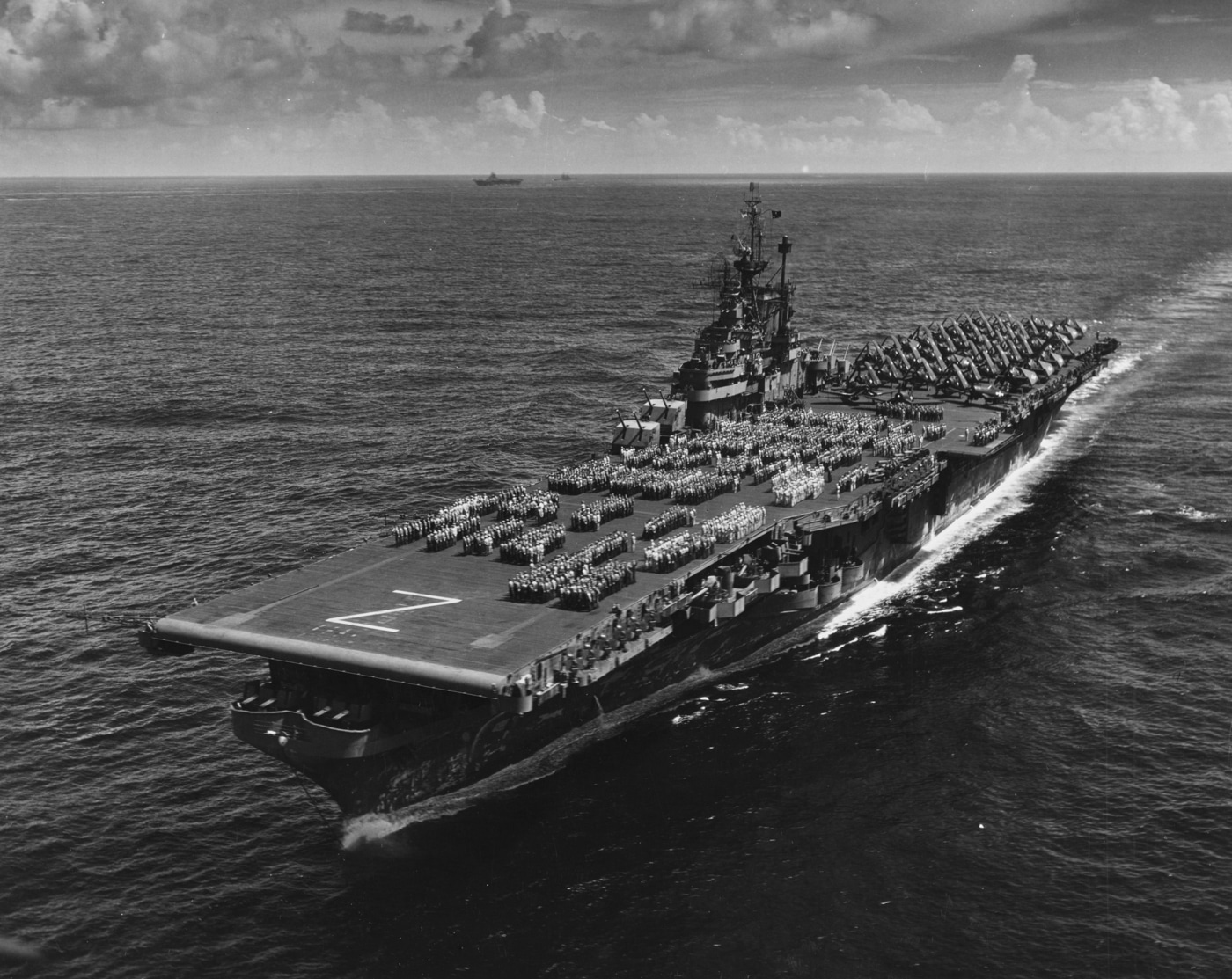
In fact, a total of 24 of a planned 32 Essex-class aircraft carriers were constructed between 1941 and 1950 — in both “short-hull” and “long-hull” versions — and of those, 14 saw combat in World War II. More importantly, not a single one was lost to enemy action, even as several sustained crippling damage. The Essex-class served as the backbone of the United States Navy starting from mid-1943, and as the 20th century’s most numerous class of capital ships, these continued to remain the workhorse carriers until the supercarriers entered the fleet.
[To learn about America’s first supercarriers, read Forrestal-Class Aircraft Carrier.]
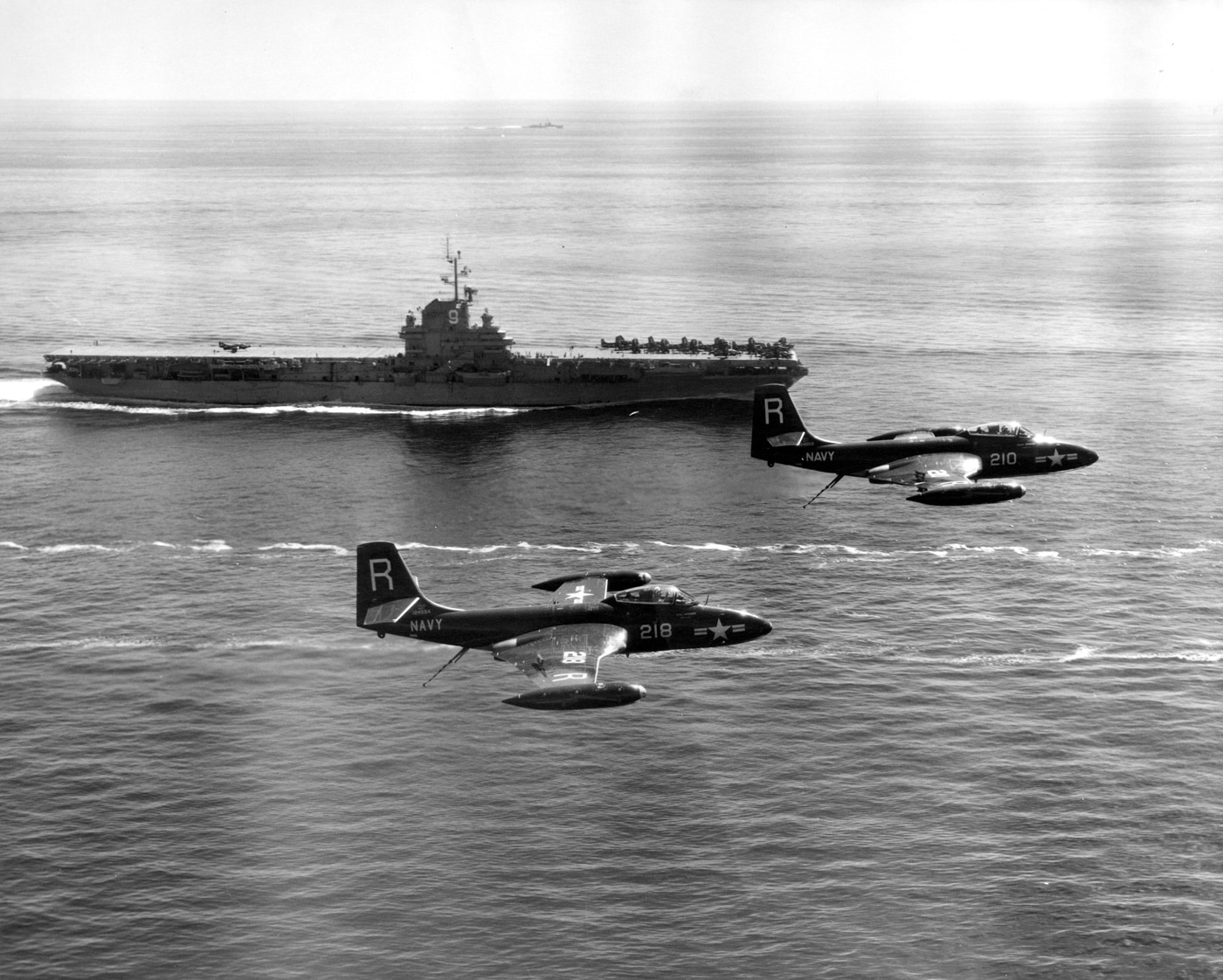
The final vessel of the class, USS Lexington (CV/CVA/CVS/CVT/AVT-16), was only decommissioned in 1991 — five decades after the keel of USS Essex (CV/CVA/CVS-9) was laid down.
Origins of the Essex-Class Aircraft Carriers
Until 1938, the United States Navy had appeared to be keeping current with its near-peer adversaries — notably the Empire of Japan — in regard to naval arms expansion among the world powers. However, four years earlier the Japanese government had given formal notice that it intended to terminate the Washington Naval Treaty. Though its provisions remained in force formally until the end of 1936, these were not renewed.
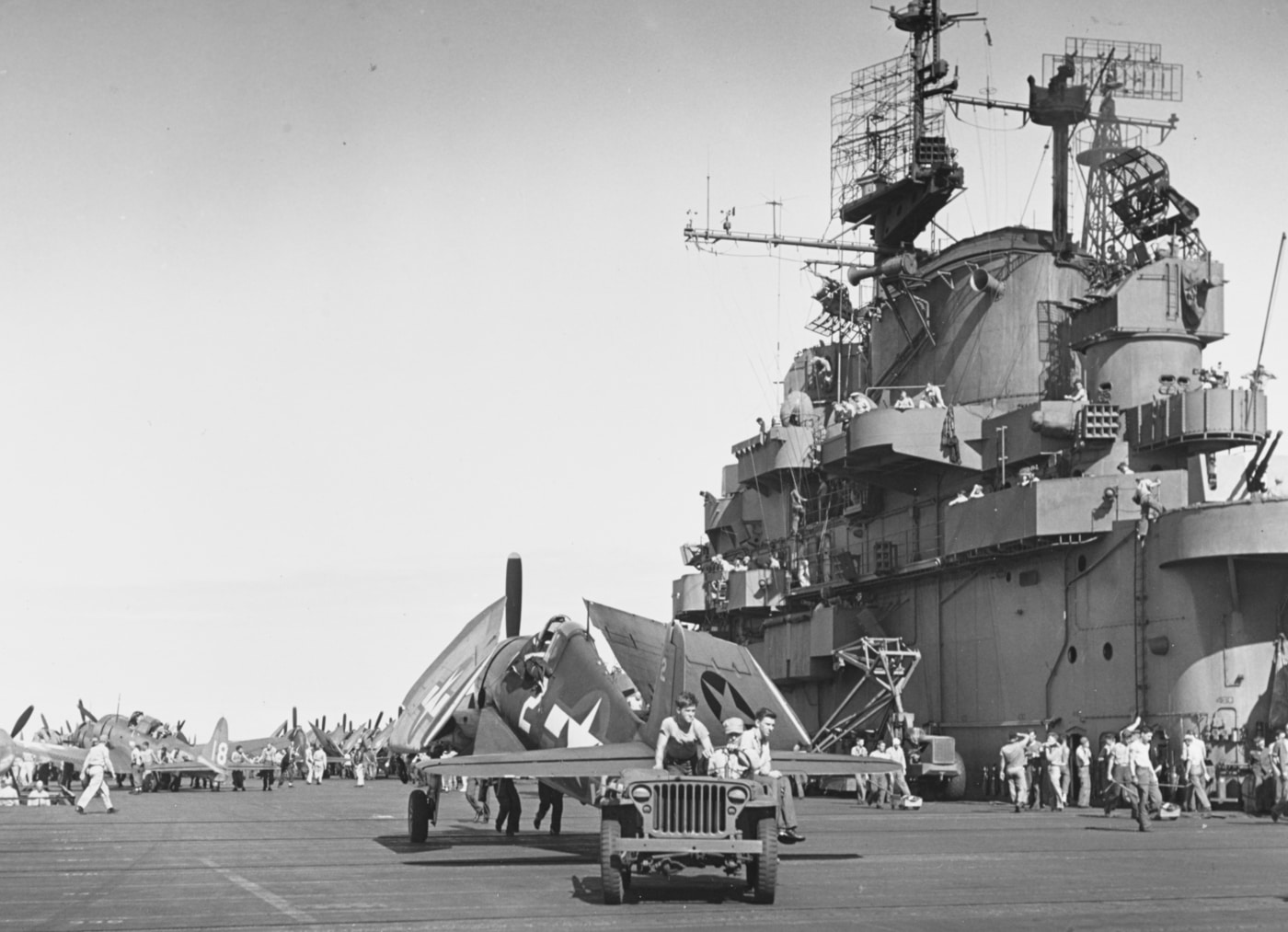
The United States gave Japan’s rapid mobilization closer attention, and on May 17, 1938, the U.S. Congress passed the Navy Expansion Act, which authorized a dramatic increase in the strength of the fleet. That initially called for the construction of 10 Essex-class carriers along with 3,000 aircraft. Of course, carriers could not be built overnight, and it was 42 months before the lead vessel, USS Essex (CV-9) would be commissioned.
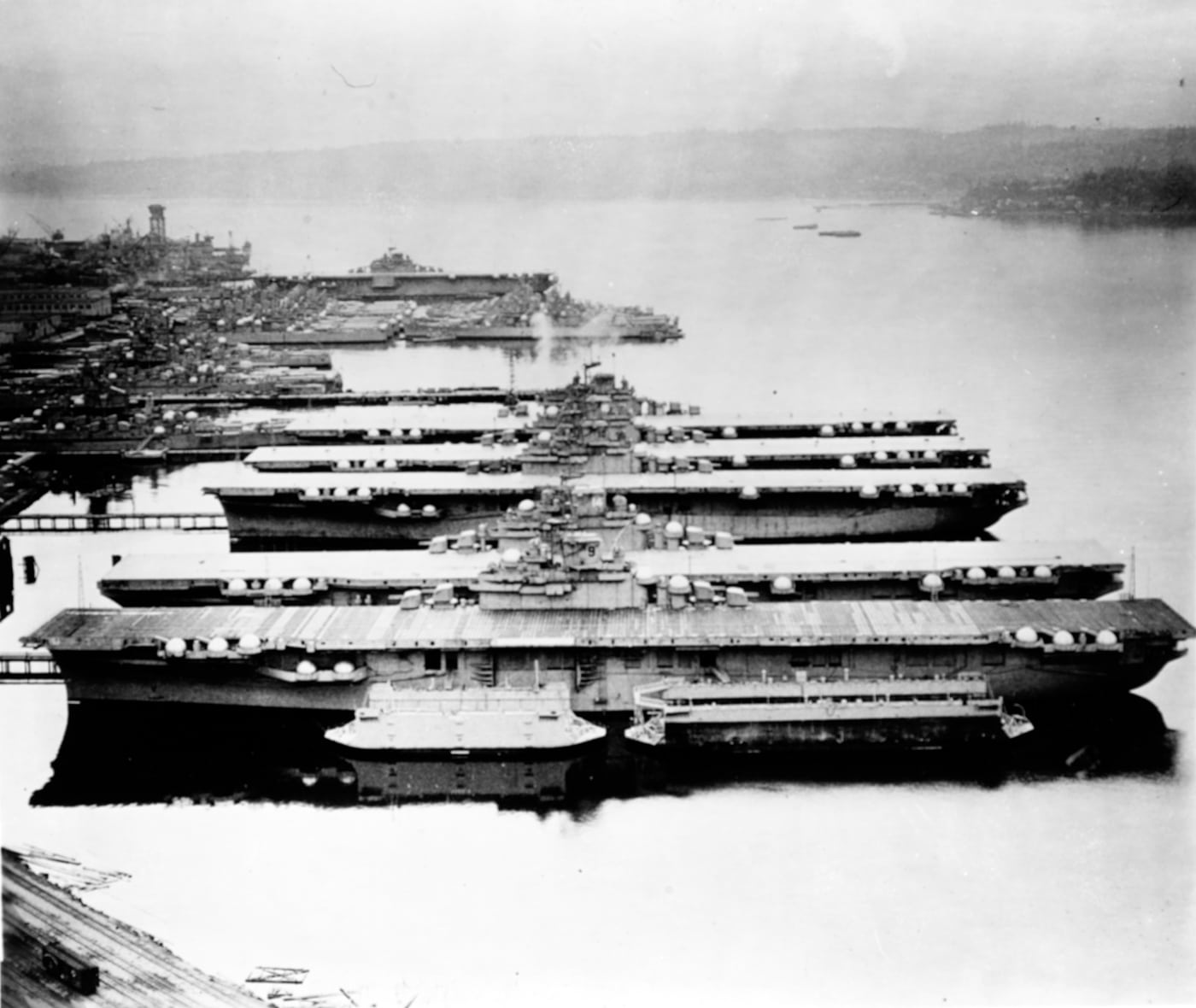
As the clouds of war formed, officials within the Imperial Japanese Navy knew it couldn’t win a long and protracted conflict with the United States. As Japan headed into a path to war, it formulated a plan to conduct a daring and potentially decisive strike that would cripple the United States Navy. That was the December 7, 1941 attack on Pearl Harbor.
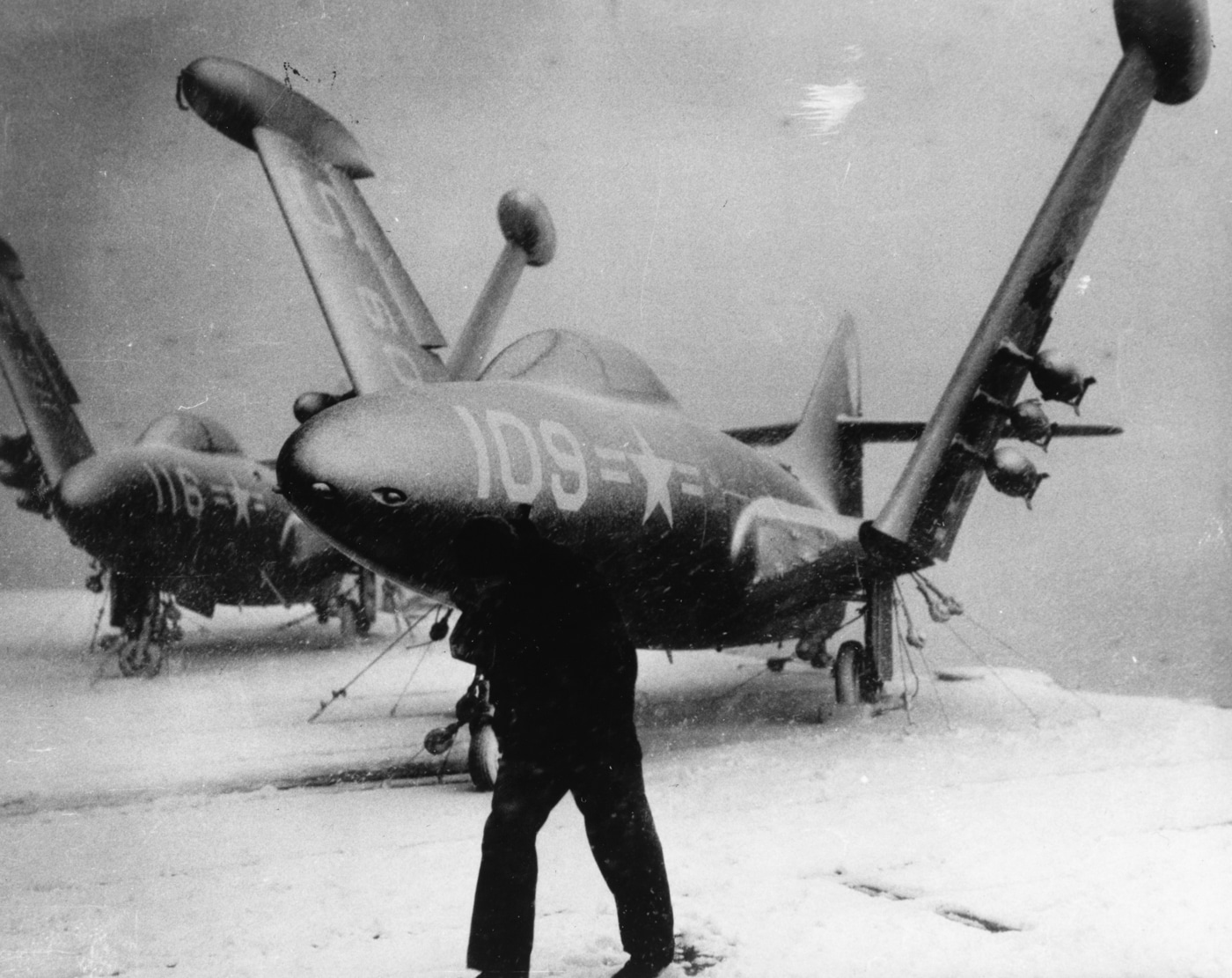
However, the U.S. Navy’s aircraft carriers weren’t in port on that fateful Sunday morning — and the Imperial Japanese Navy had to settle for an attack on the U.S. Navy’s battleships. That was a setback for the United States, but most naval historians agree that it was a hollow victory for Japan. Just six months later, the U.S. Navy essentially evened the score at the Battle of Midway, in which four Japanese carriers were sunk with just the loss of one of the U.S. Navy’s carriers.
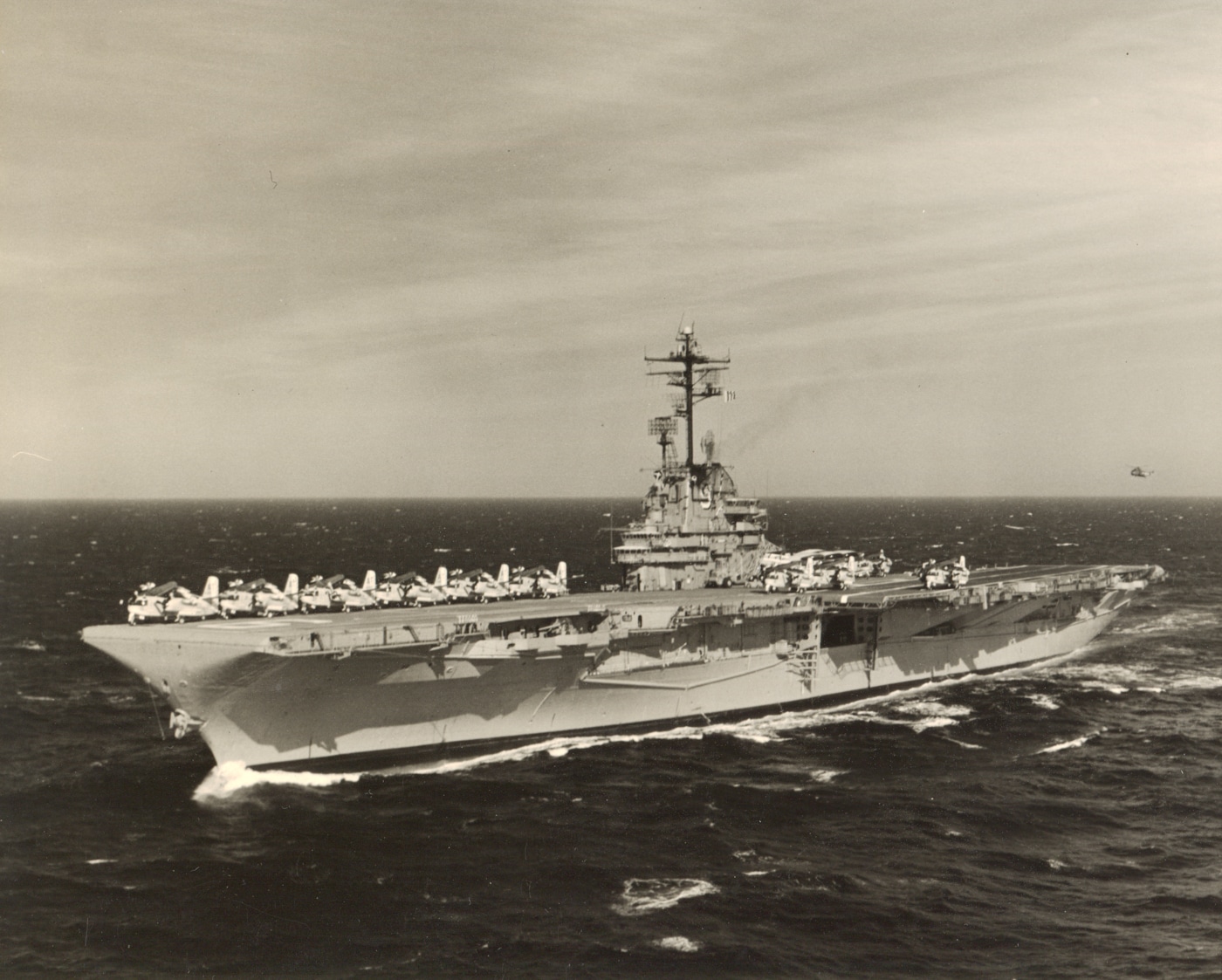
Japan couldn’t hope to replace those carriers, but by then the United States Navy was already proving that it was the “Arsenal of Democracy.” From the Japanese perspective, American carrier strength grew at an alarming rate.
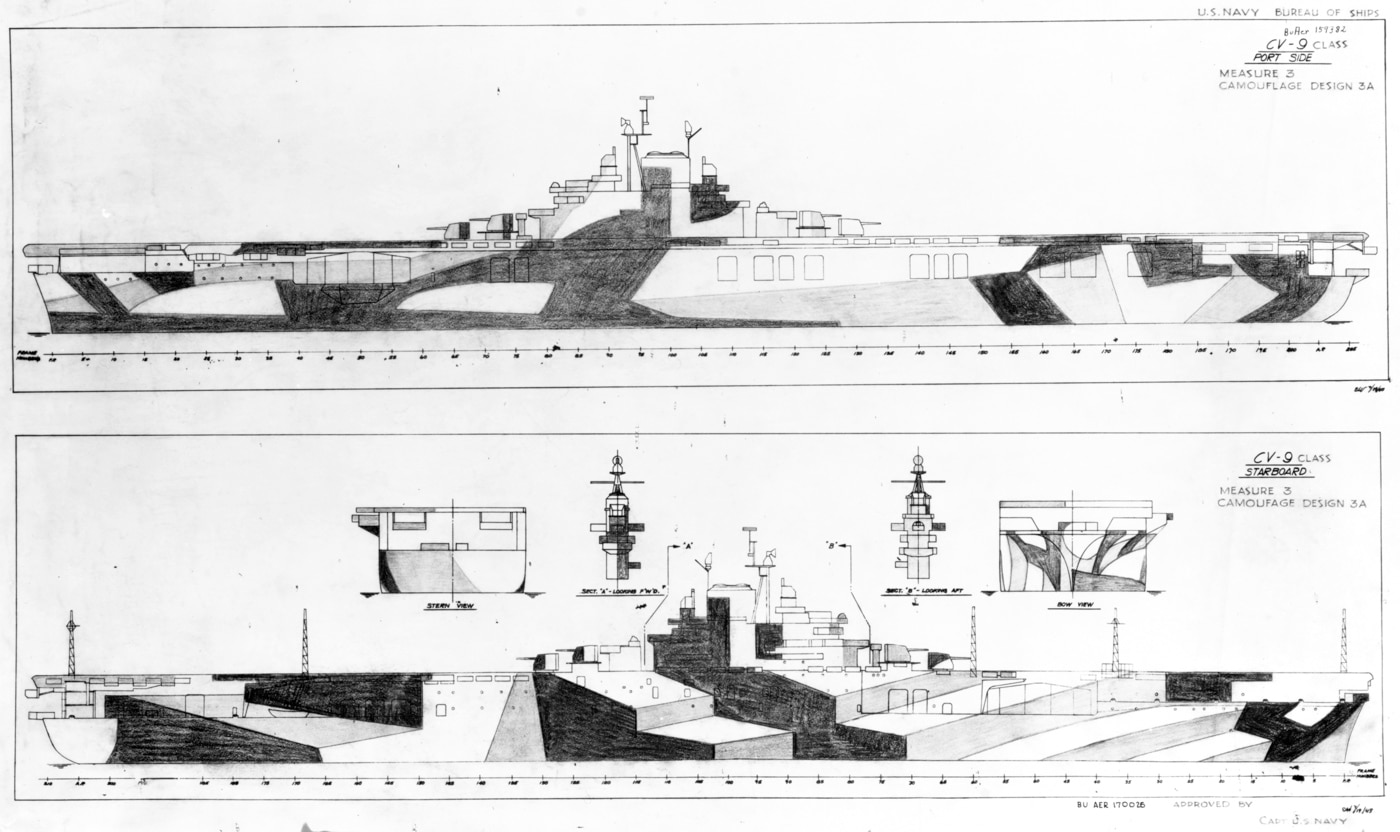
On the last day of 1942, just over a year after the attack on Pearl Harbor and six months after Midway, USS Essex joined the fleet. Within the next year, she was joined by six sister carriers. These ships proved vital to the War in the Pacific, and continued to play a significant role in the Cold War-era.
Essex-Class Key Features
In 1937, with the lapse of the Washington Naval Treaty, the only restriction on the size of U.S. warships was what was imposed by Congress. As noted, U.S. lawmakers voted to fund the construction of the new class of aircraft carriers. The result was warships that displaced 27,100 tons, with a full load of 36,380 tons — while the vessels would have a full complement of 2,600 officers and men.
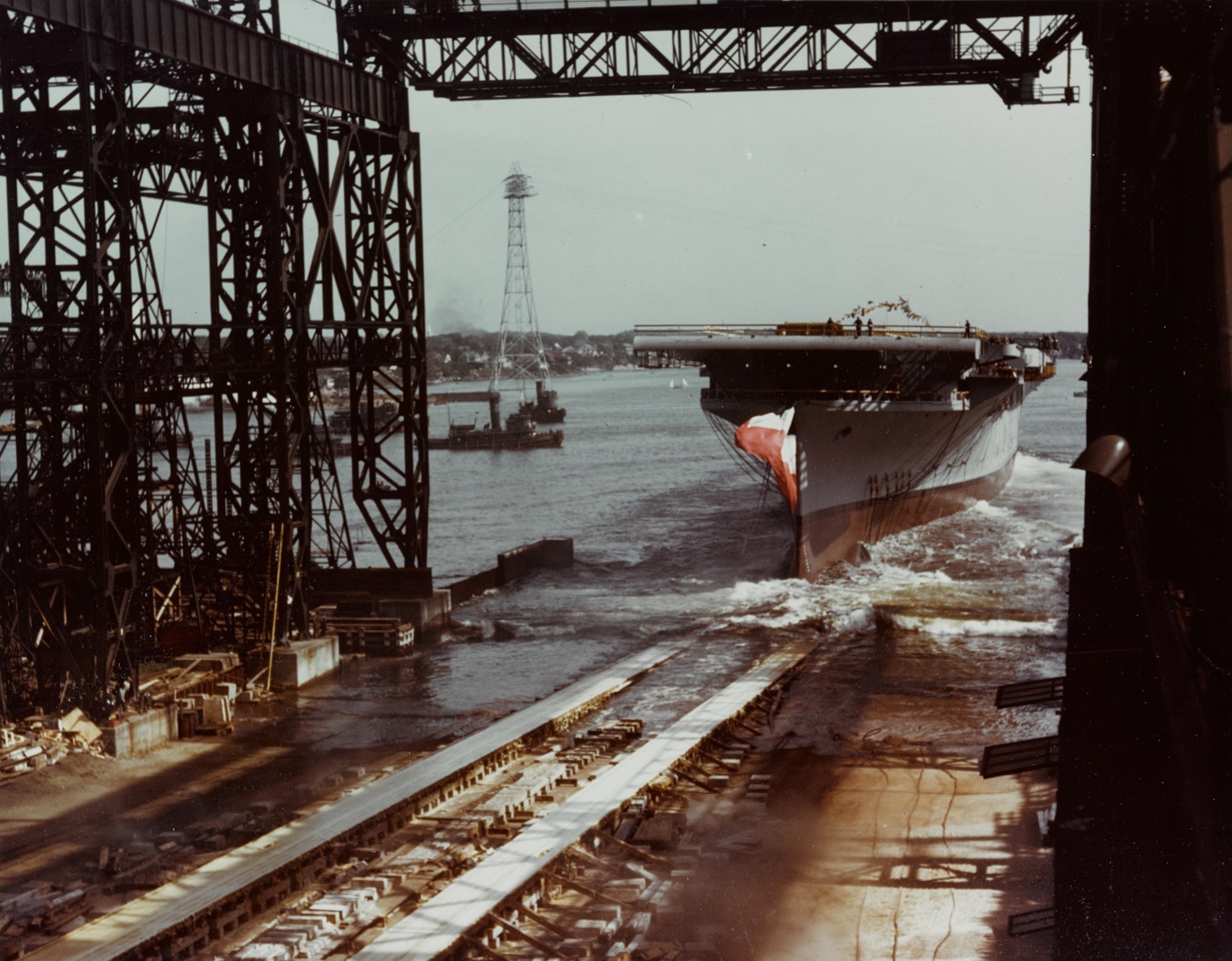
The Essex-class was some 30 percent larger in size than the preceding Yorktown-class, and this set the standard for a new generation of fleet carriers. The designers also had a major factor working in their favor, namely the advances in steam machinery that meant they could make considerable weight savings in that area, while actually increasing the installed power by as much as 25 percent. The Essex-class carriers were powered by four Westinghouse geared turbines sustained by eight Babcock and Wilcox boilers, which produced 110 MW (150,000 shp), which provided a maximum speed of nearly 33 knots.
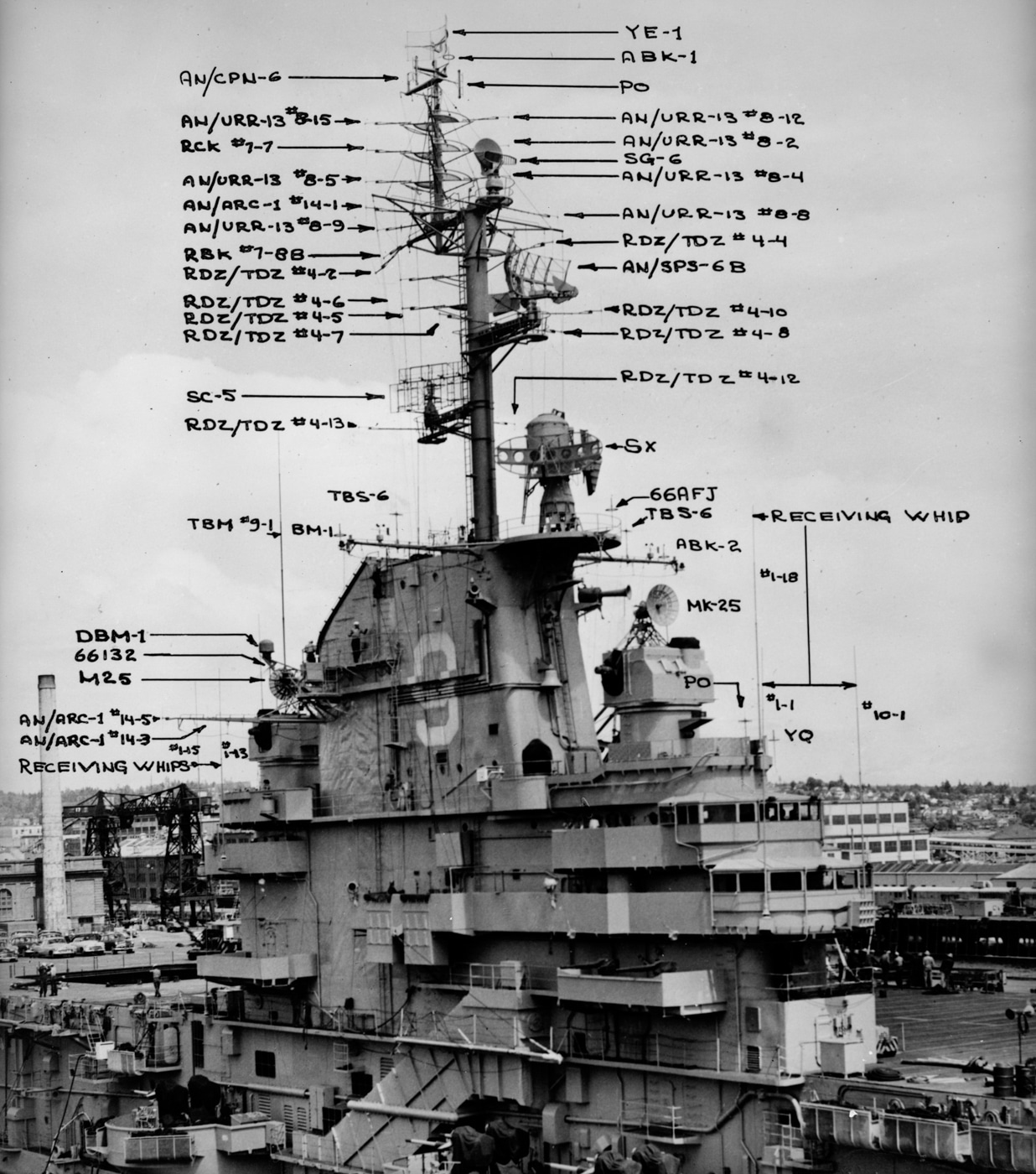
The new class of flattops was 15 meters (50 feet) longer at the waterline than the Yorktown-class, and three meters (10 feet) broader abeam — yet the carriers were still able to pass through the Panama Canal, which was an important consideration of the U.S. Navy’s Two-Ocean Act of 1940.
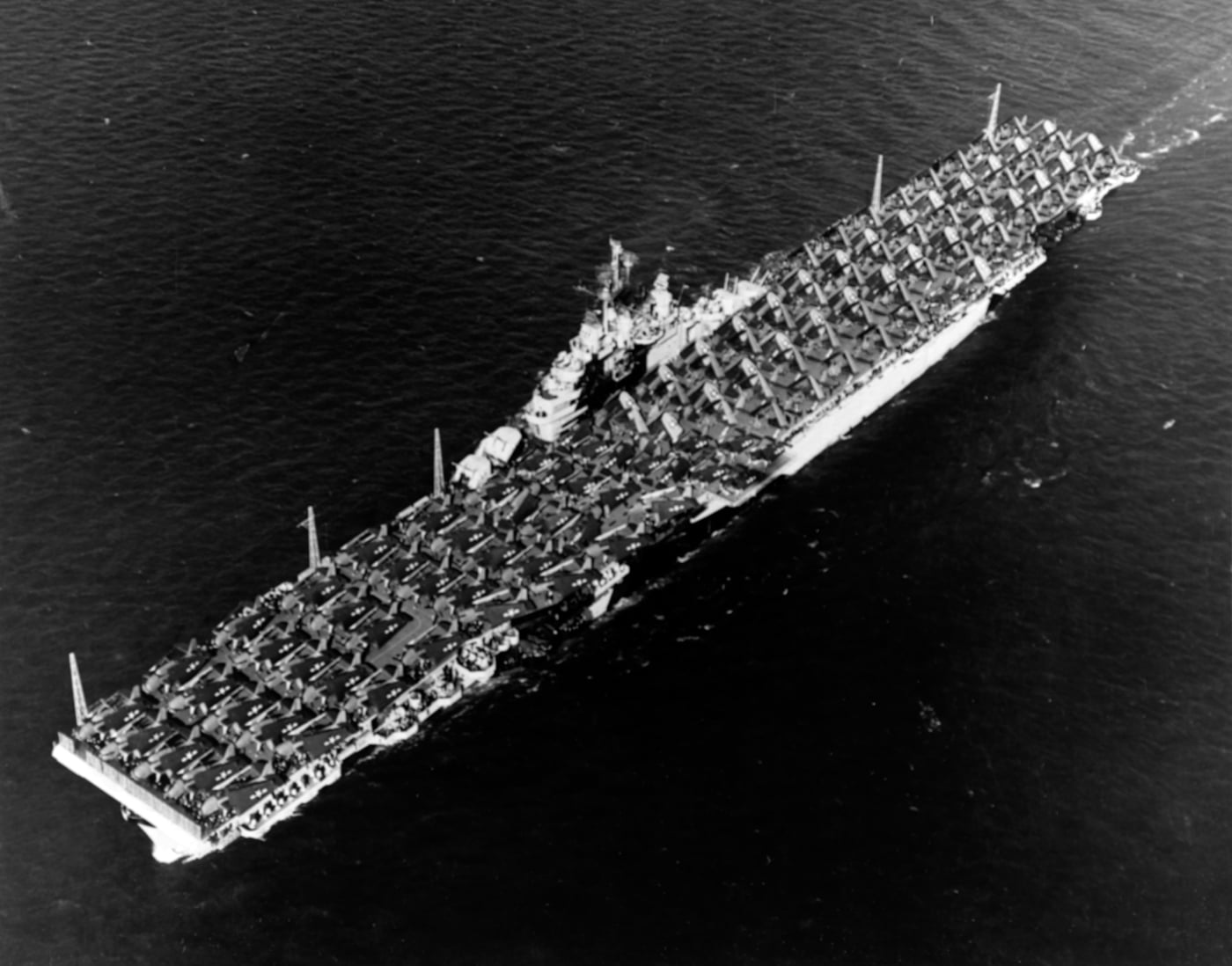
The 1942 aircraft complement consisted of 36 fighters, 37 dive-bombers and 18 torpedo-bombers. The entire hull structure protected the hanger against non-armor-piercing bombs, while the deck, flight deck and hanger were built on as part of the superstructure. The ships could also carry 240,000 gallons (908,500 liters) of aviation fuel.
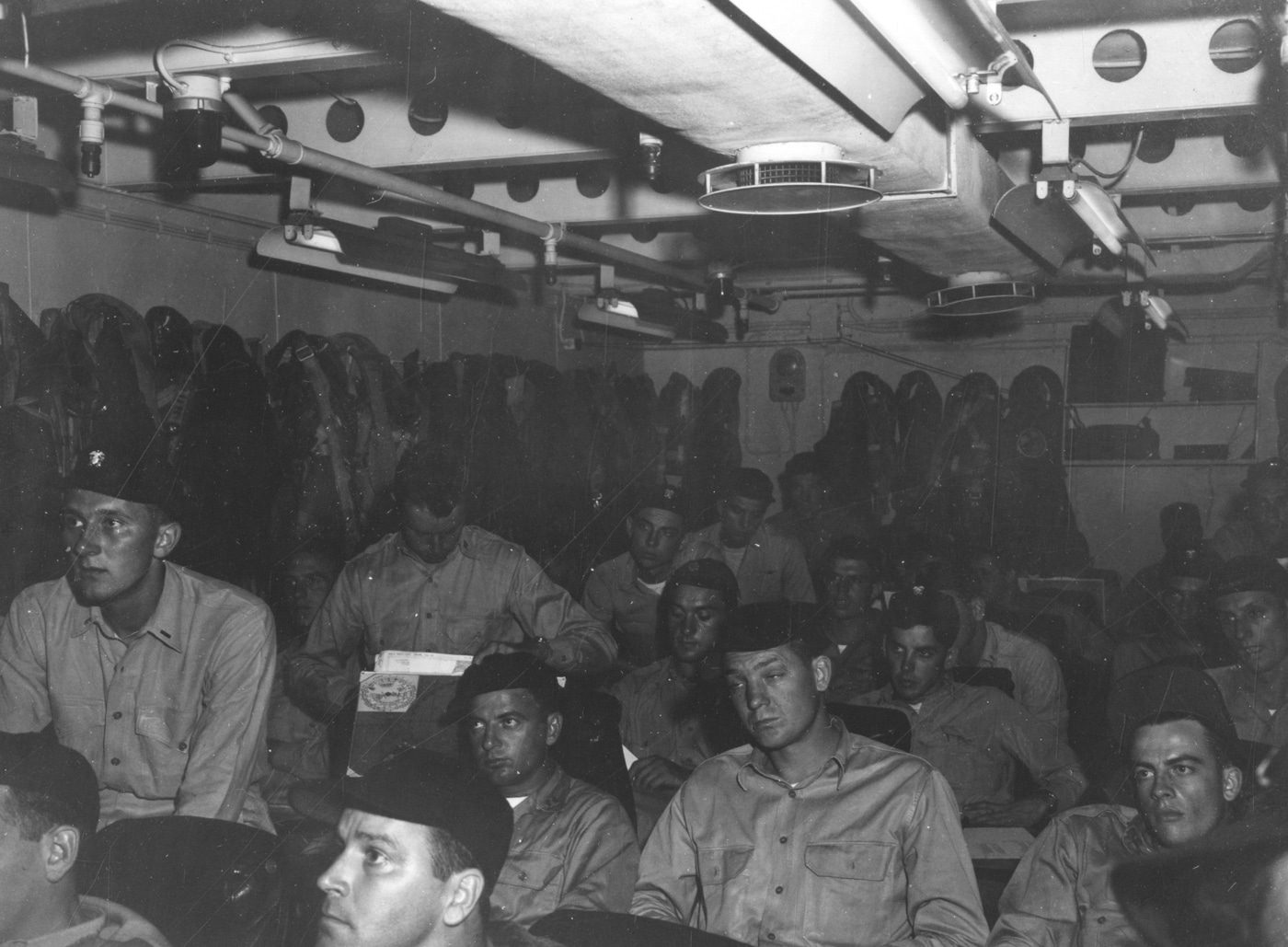
The original design called for three catapults — two on the flight deck and a third on the hanger deck, but it was found not to be useful and was later deleted. Defensive armament of the carriers originally consisted of 12 127mm (5-inch) eight 40mm (1.57-inch) quadruple 56-caliber guns, and 46 20mm single 78-caliber guns.
From the Arsenal of Democracy
The United States truly stepped up during the Second World War to become the “Arsenal of Democracy”, building thousands of tanks and aircraft, but it also saw the greatest naval expansion in history. Essex-class carriers were built at the Brooklyn Naval Yard, Newport News Shipbuilding & Drydock, the Philadelphia Navy Yard and the Norfolk Navy Yard.
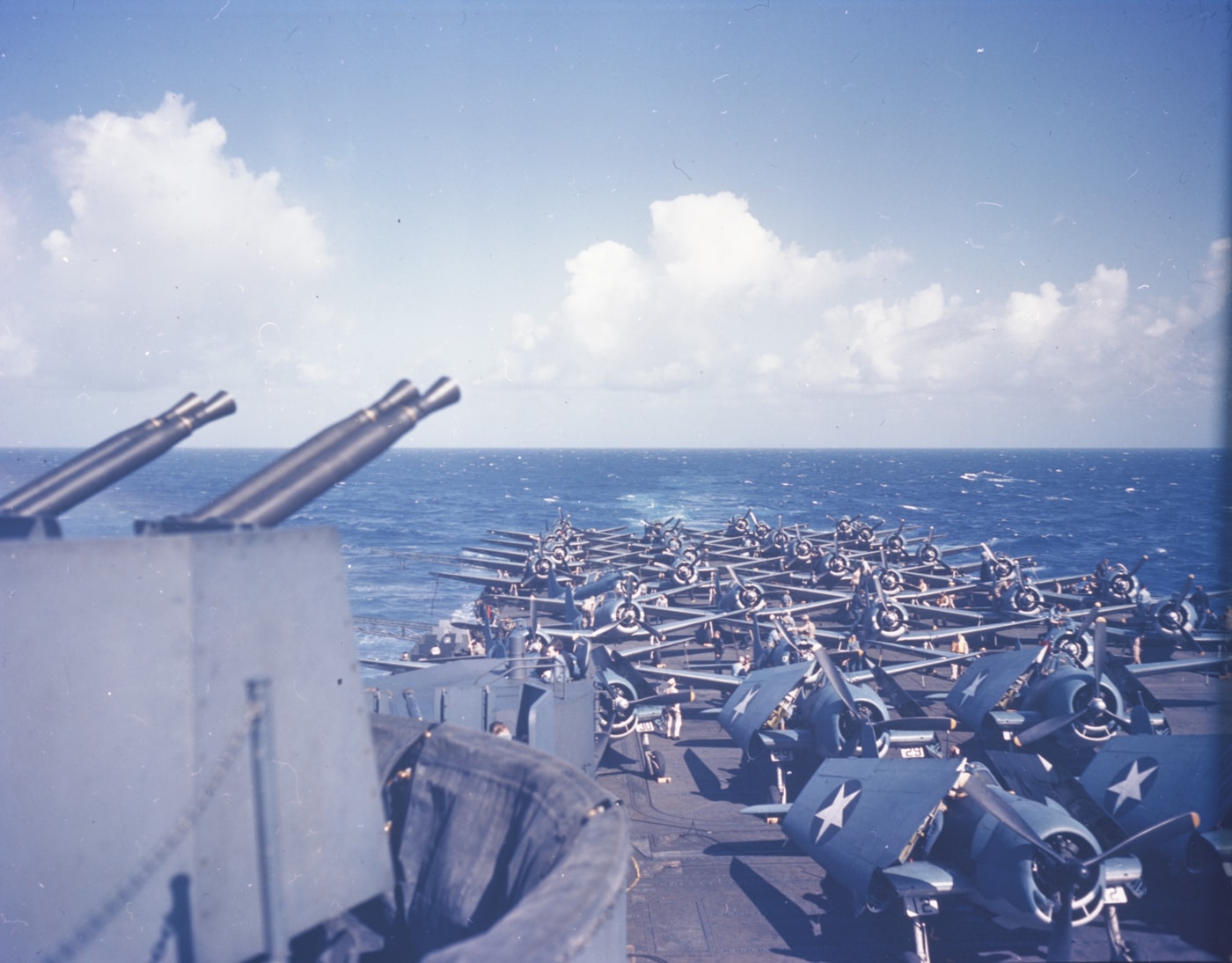
The Essex-class carried on the policy of naming the United States Navy’s aircraft carriers after historic battles — which began with the Lexington-class. It also honored those pre-World War II carriers that were lost in actions in the early stages of the conflict, notably USS Lexington (CV-2), which was sunk at the Battle of Coral Sea in May 1942, and USS Yorktown (CV-5), which was lost at the Battle of Midway a month later.
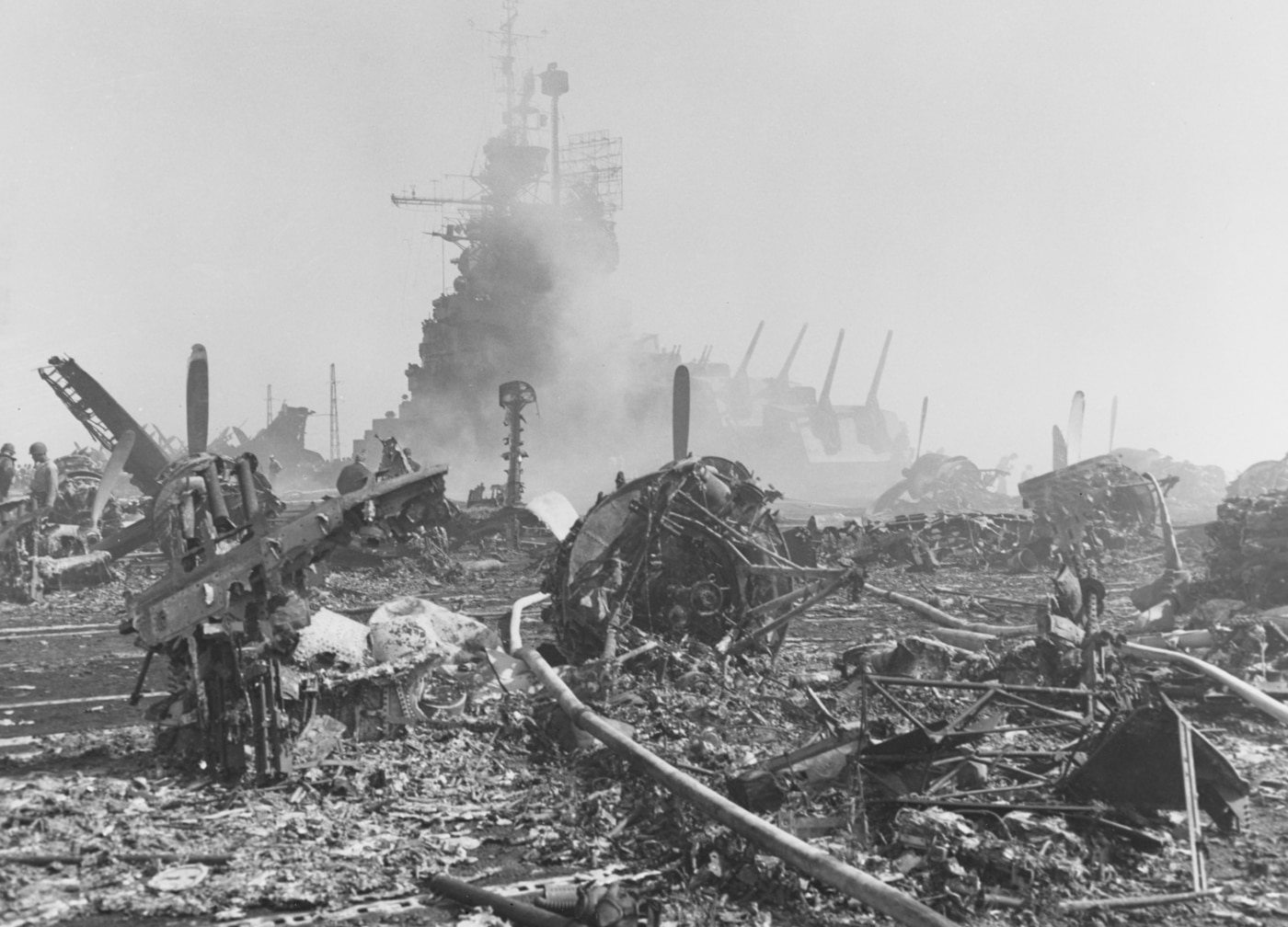
The new USS Yorktown (CV-10) had been laid down as the Bon Homme Richard, while USS Lexington (CV-16) was laid down as the Cabot. Each has the unique distinction of thus being named after a historic battle from U.S. history but also carries the name of a historic ship that took part in critical engagements in the Pacific Theater of Operations. Both of those vessels are among the four Essex-class preserved as museum ships.
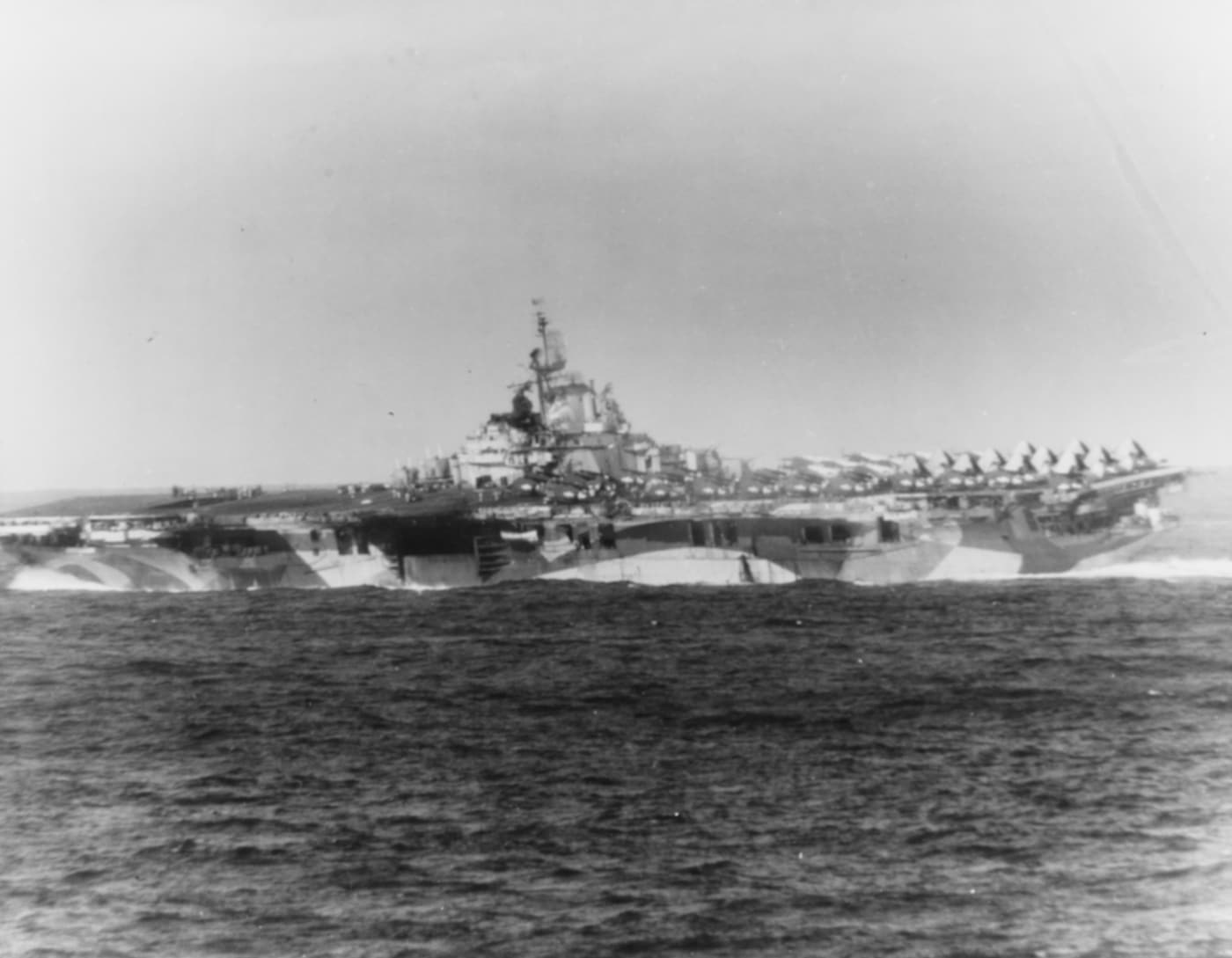
However, one of the flattops that had its name changed was USS Princeton (CV-37), which was actually laid down as Valley Forge. The reasoning was that the Independence-class USS Princeton (CVL-23) was sunk at the Battle of Leyte Gulf in October 1944, and a decision was made to honor the prior warship. Interestingly, though no carrier of the class ended up being named Cabot, CV-31 did receive the name Bon Homme Richard while CV-45 was subsequently named Valley Forge.
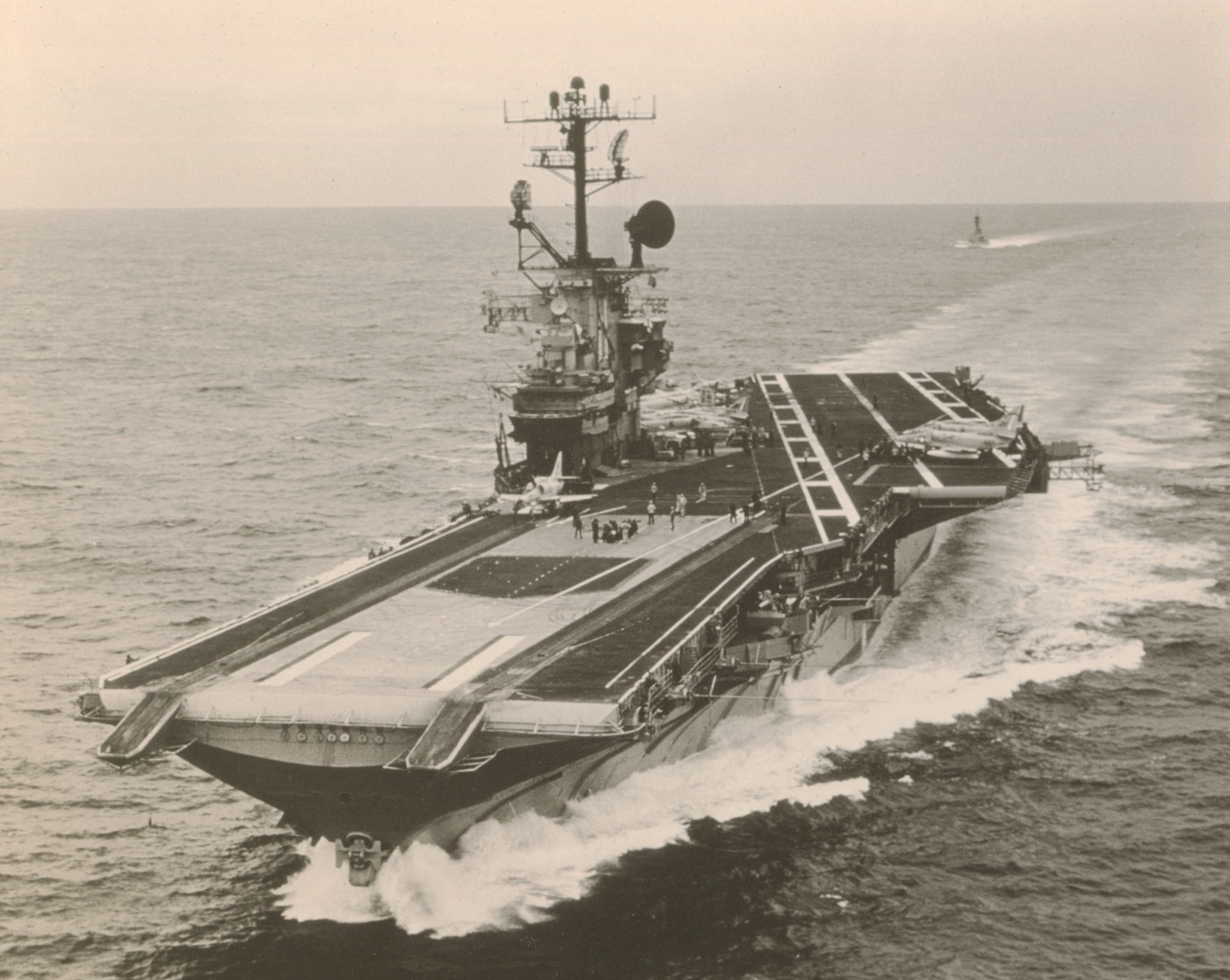
Another notable name choice was USS Shangri-La (CV-38), which was named not for a battle but from a mythical place that appeared in the 1933 novel Lost Horizon by James Hilton. Following the April 1942 “Doolittle Raid” on Japan that was launched from the Yorktown-class USS Hornet (CV-8), President Franklin Roosevelt responded to a reporter’s question that the raid had been launched from “Shangri-La.” CV-38 went on to earn two battle stars for her role in the Pacific Theater in the Second World War. After being modernized, USS Shangri-La went on to earn three more battle stars for service in the Vietnam War.
Most Significant Class of U.S. Warships
Naval historians have argued that the Essex-class was among the most significant class of warships in American naval history due to their serving as the backbone of the U.S. Navy in the Second World War. The flattops played a central role in the Pacific Theater from 1943 to the end of the conflict and were present at every major battle in the latter part of the war.
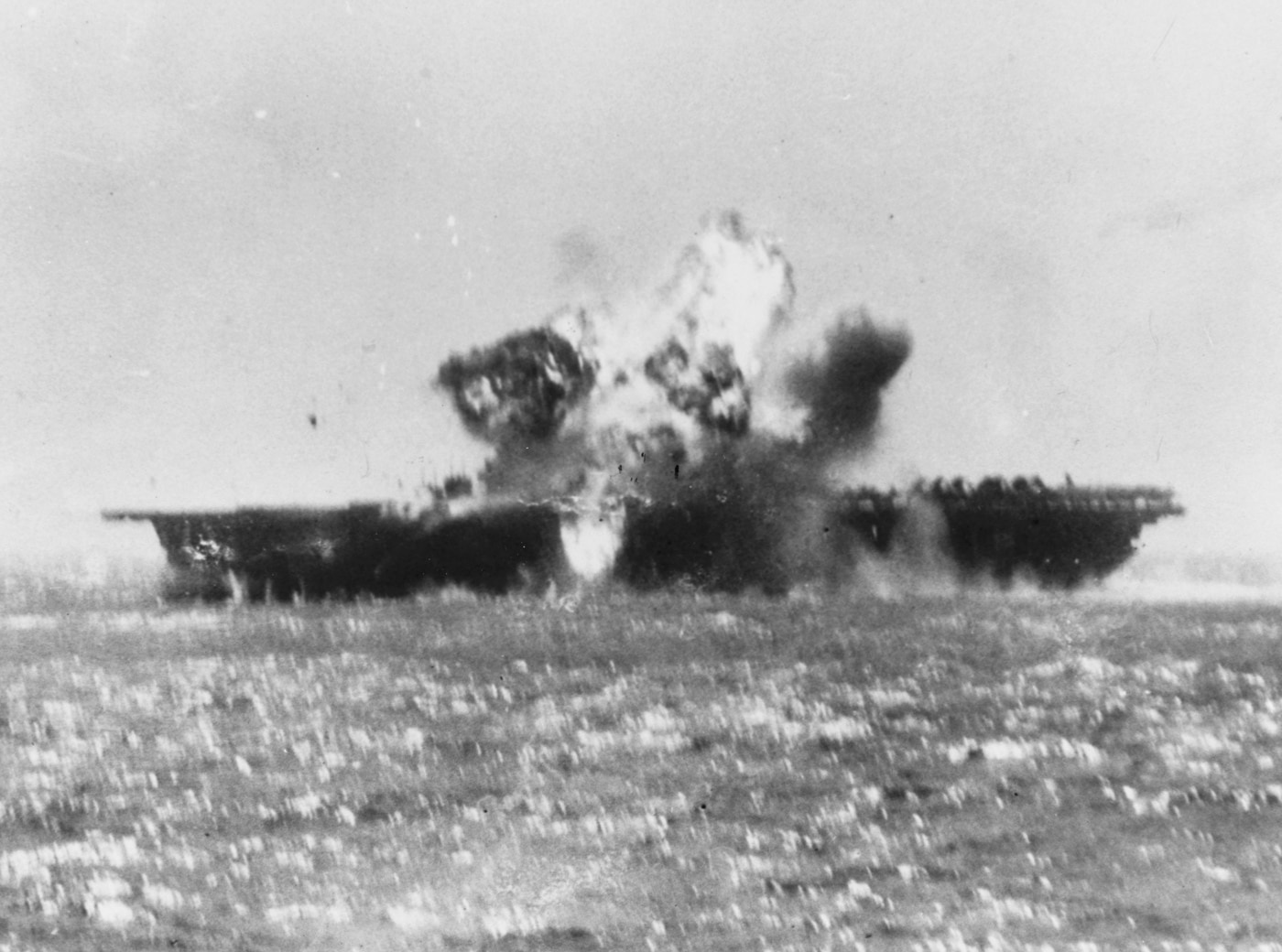
The carriers successfully performed a number of missions that included air superiority to the U.S. fleets, attacks on the Imperial Japanese Navy’s fleet, supporting landings, transport of aircraft and troops, and notably the bombing of the Japanese home islands. The Essex-class carriers survived not only bombs, torpedoes, and kamikaze attacks but also typhoons.
As previously noted, not a single Essex-class carrier was lost to the enemy.
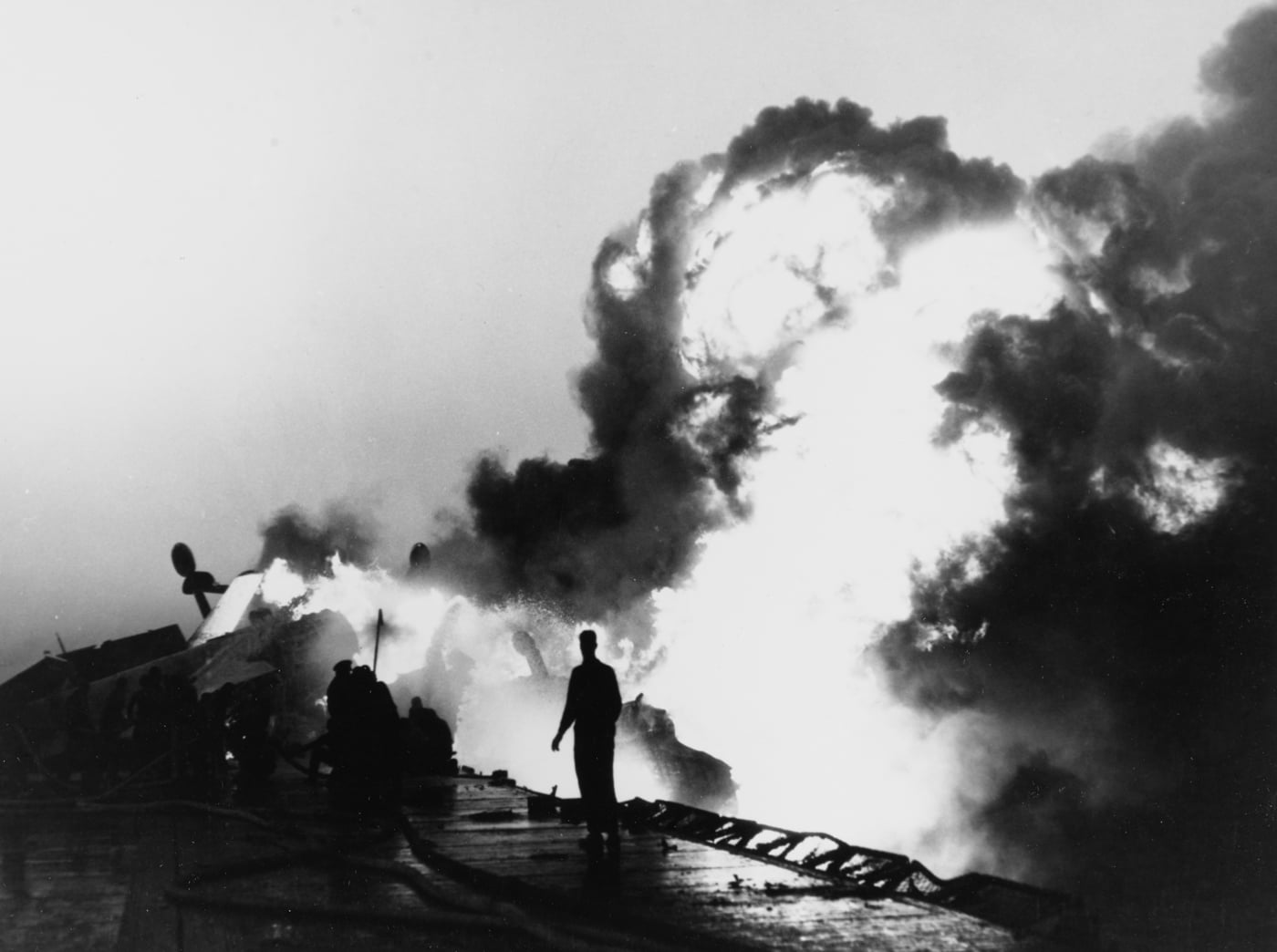
Many further played a key role in Operation Magic Carpet, which brought home millions of service members from distant theaters at the end of the war. In addition, eleven of the carriers went on to participate in the Korean War, while 13 of the 24 that were built also participated in the Vietnam War.
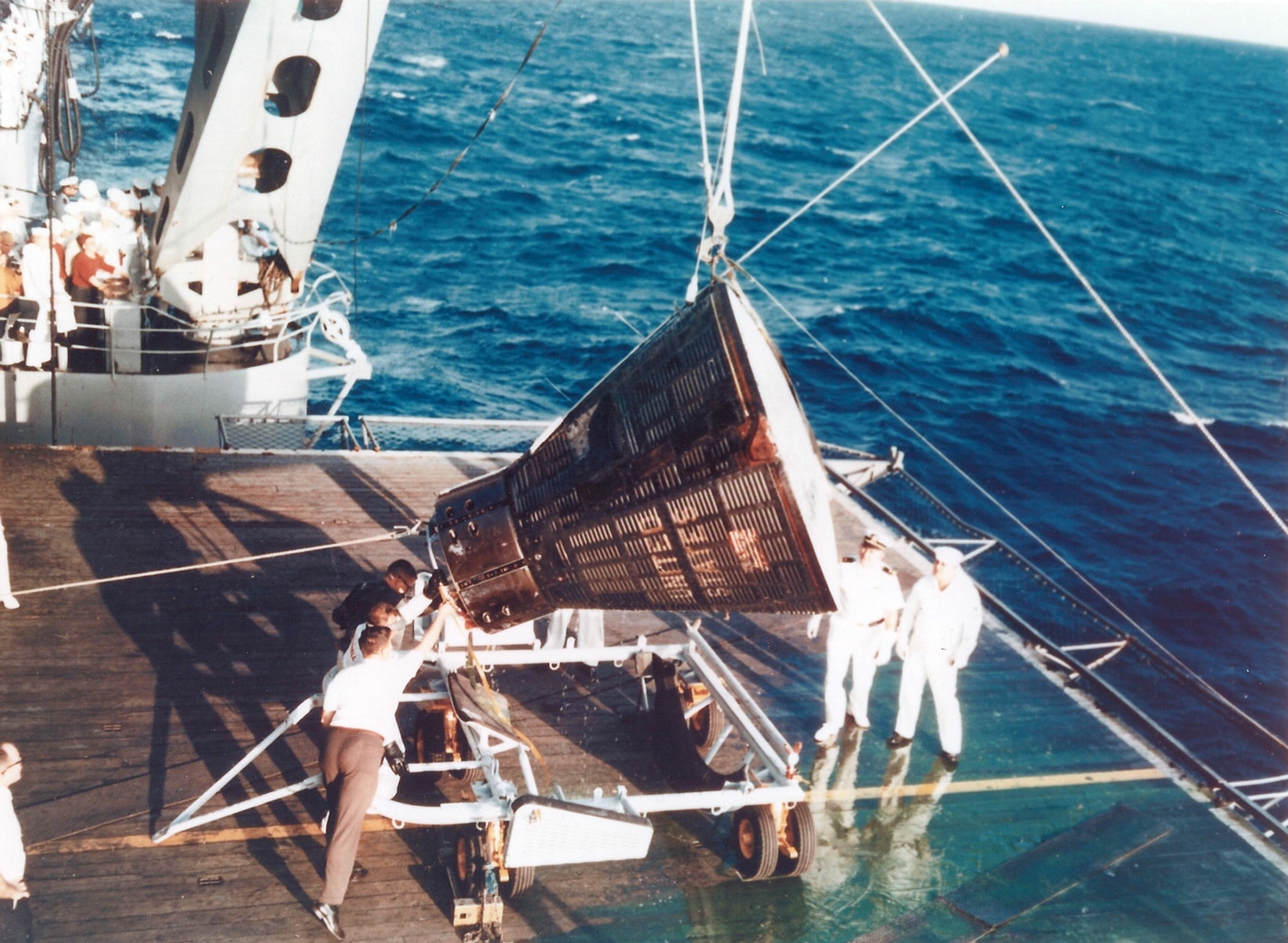
In peacetime, several Essex-class aircraft carriers also played a role in the U.S. space program — serving as recovery ships for unmanned and manned spaceflights. That included the Mercury, Gemini and Apollo programs. The first steps back on Earth of the returning astronauts Neil Armstrong, Buzz Aldrin, and Mike Collins following the Apollo 11 moon mission in July 1969 was on the deck of USS Hornet (CV/CVA/CV-12), another of the Essex-class carriers preserved as a museum ship.
Essex-Class Museum Ships
Today, it is possible to walk the flight decks of four of the Essex-class carriers that have been preserved as museum ships.
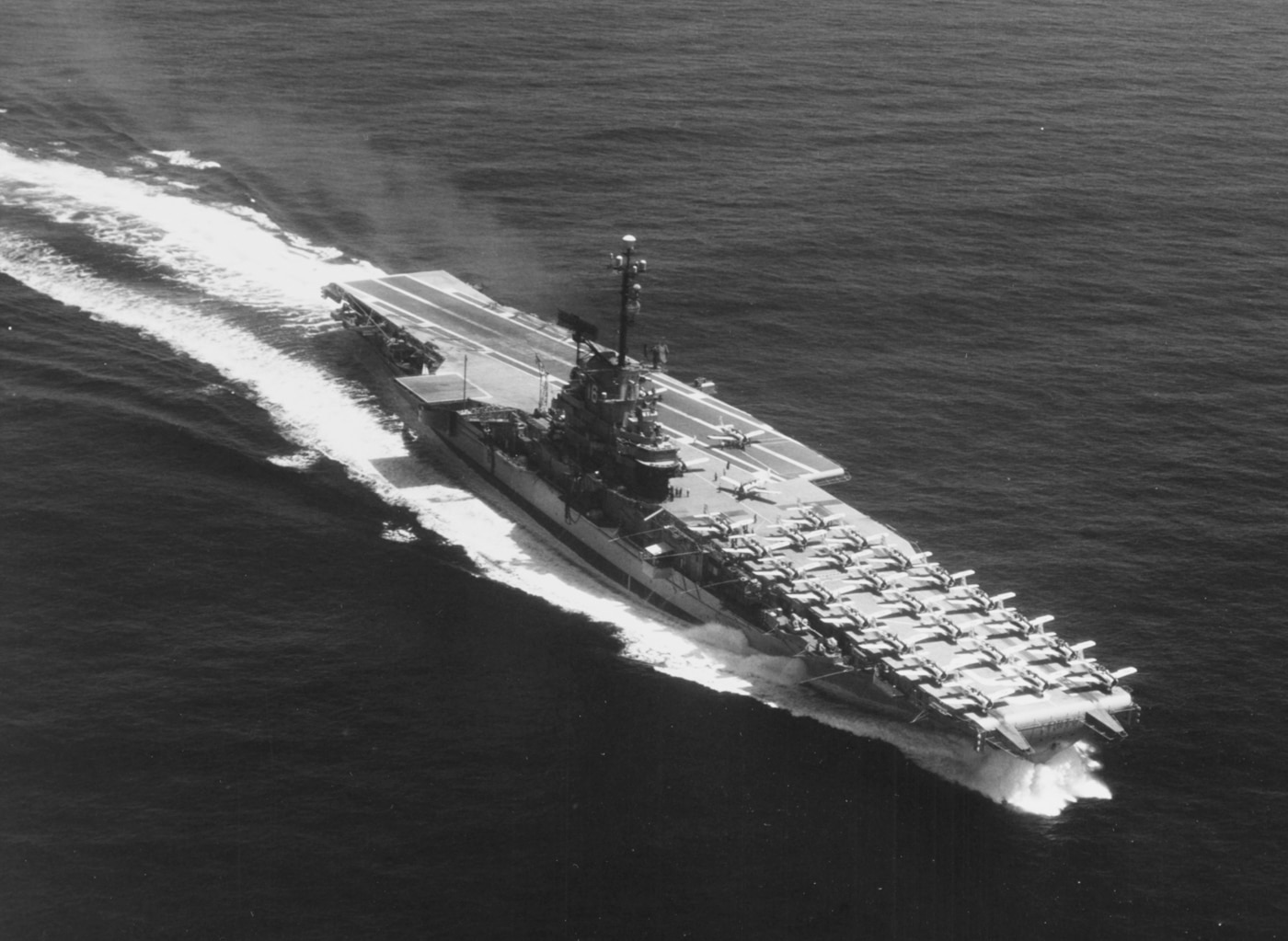
USS Yorktown (CV/CVA/CVS-10), which was decommissioned in 1970, is now preserved at the Patriots Point Naval & Maritime Museum in South Carolina. Reactivated during the Korean War, she became an anti-submarine carrier during the Vietnam War — and she earned a total of 12 battle stars and a Presidential Unit Citation during WWII, and five more battle stars during Vietnam. The carrier can be seen in such films as Tora! Tora! Tora!, and The Philadelphia Experiment.
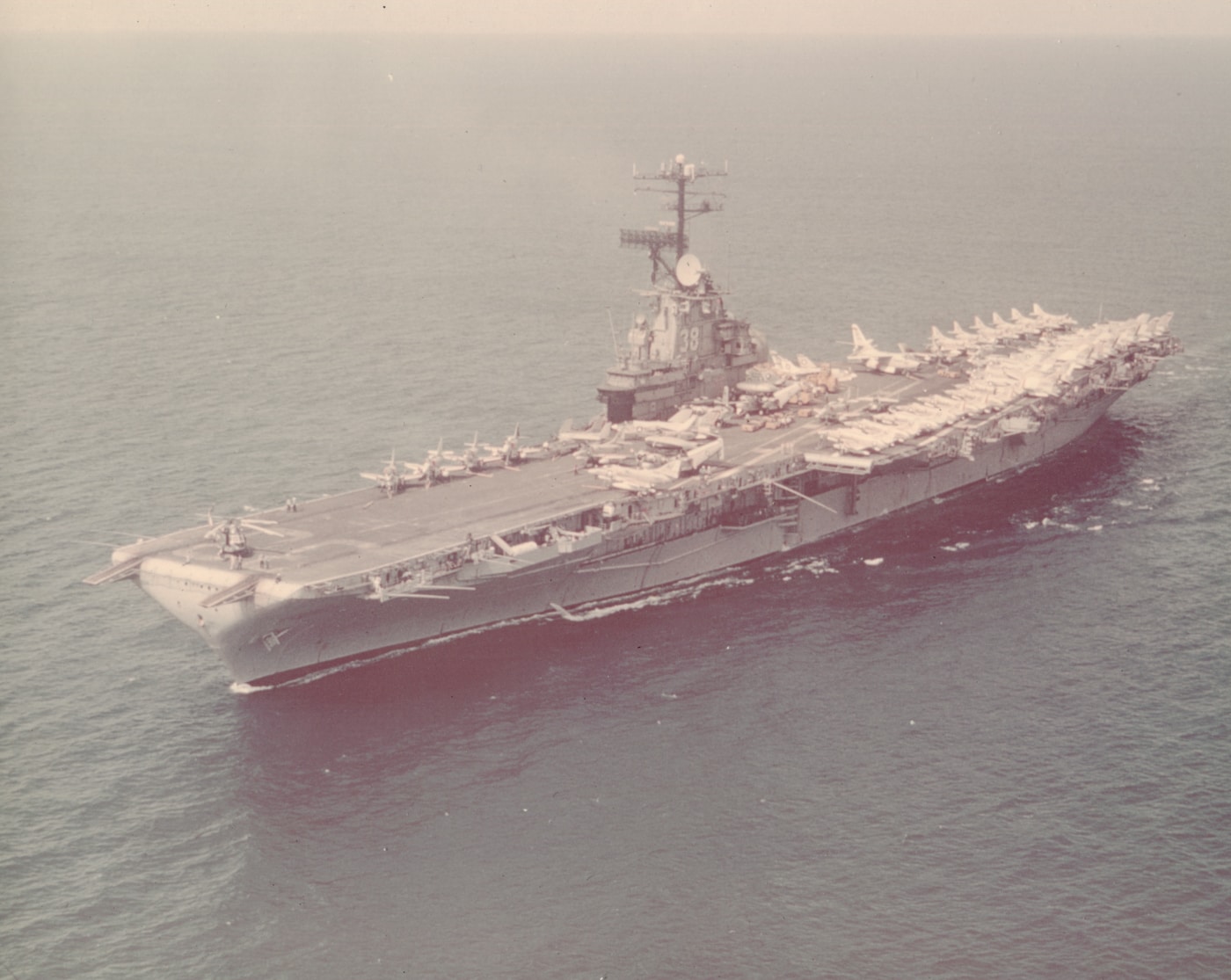
USS Hornet (CV/CVA/CVS-12) — named to honor CV-8 that was sunk at the Battle of Santa Cruz in October 1942 — went on to earn seven battle stars during World War, along with a number of other awards including Presidential Unit Citation; while she also earned an additional six battle stars in Vietnam. The carrier is now a museum ship in Alameda, California.
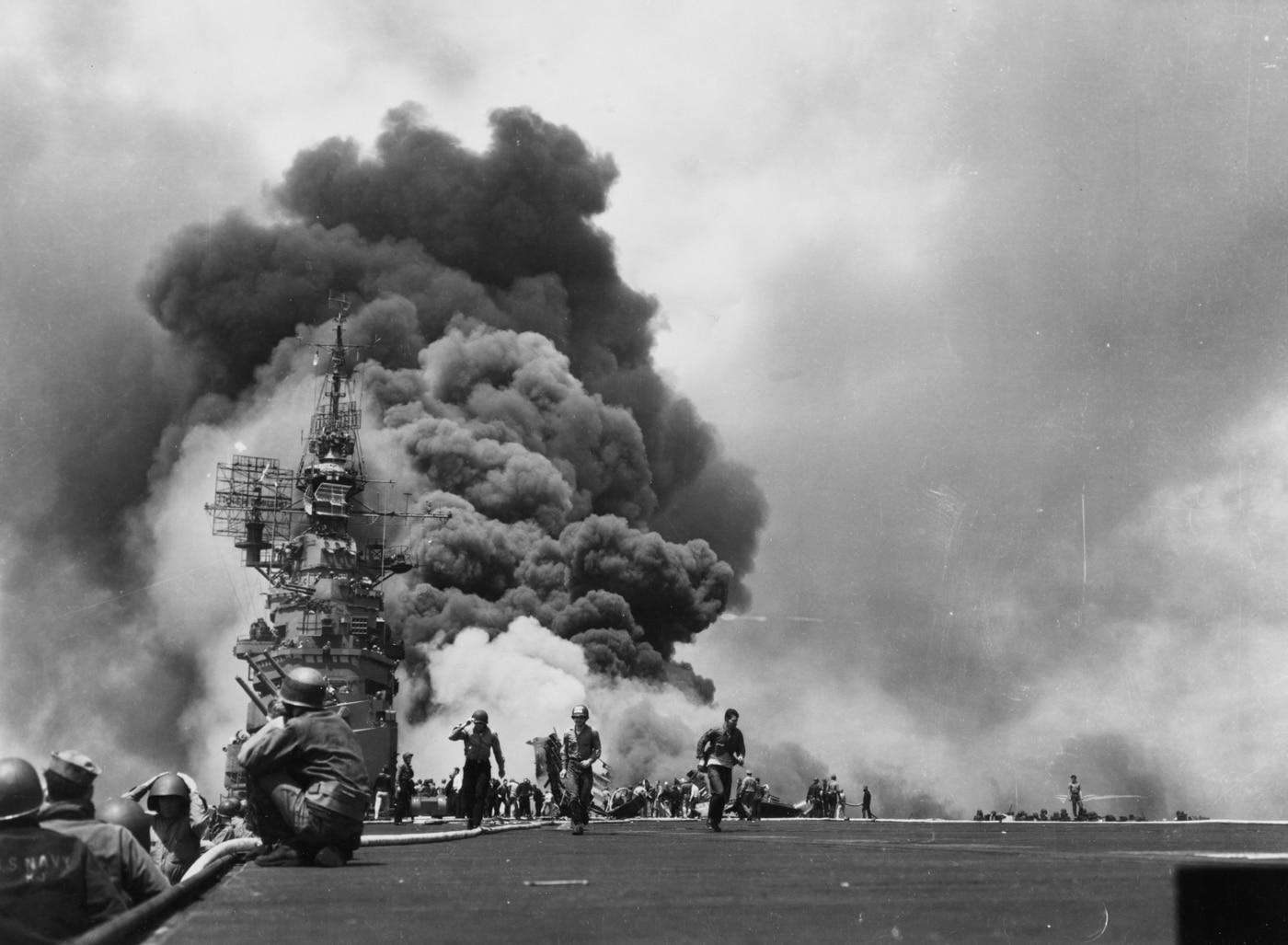
New York City’s Hudson River is home to USS Intrepid (CV/CVA/CVS-11), which earned five battle stars and Presidential Unit Citation during the Second World War, and three more battle stars during the Vietnam War. She served as an FBI command post after the 9/11 attacks on the World Trade Center and subsequently underwent a major renovation effort from 2006 to 2008.
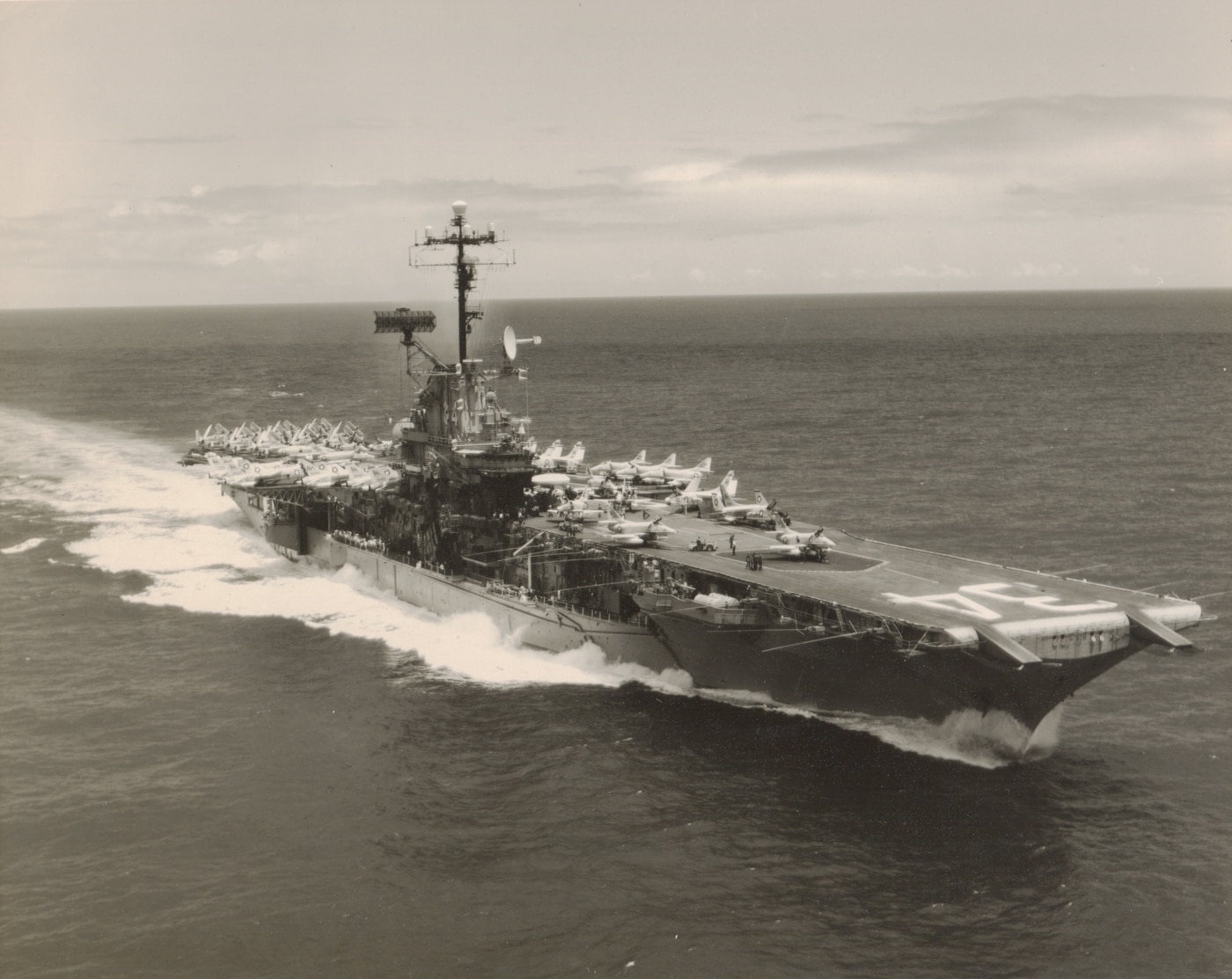
USS Lexington was only decommissioned in 1991 and had an active service life that was longer than any other Essex-class ship. Though her surviving sister ships have lower hull numbers, it has been noted by naval historians that she was laid down and commissioned earlier. As a result, the Lexington is now the oldest remaining fleet carrier in the world. She also earned 11 battle stars for major engagements in the Second World War. In addition, the flattop served as a filming location for the 1976 film Midway, and again for the 1987 miniseries War and Remembrance. She was altered to resemble a Japanese carrier as well as USS Hornet (CV-8) for the 2001 film Pearl Harbor. USS Lexington is now a museum ship in Corpus Christi, Texas.
Editor’s Note: Please be sure to check out The Armory Life Forum, where you can comment about our daily articles, as well as just talk guns and gear. Click the “Go To Forum Thread” link below to jump in and discuss this article and much more!
Join the Discussion
Continue Reading
Did you enjoy this article?

 110
110






